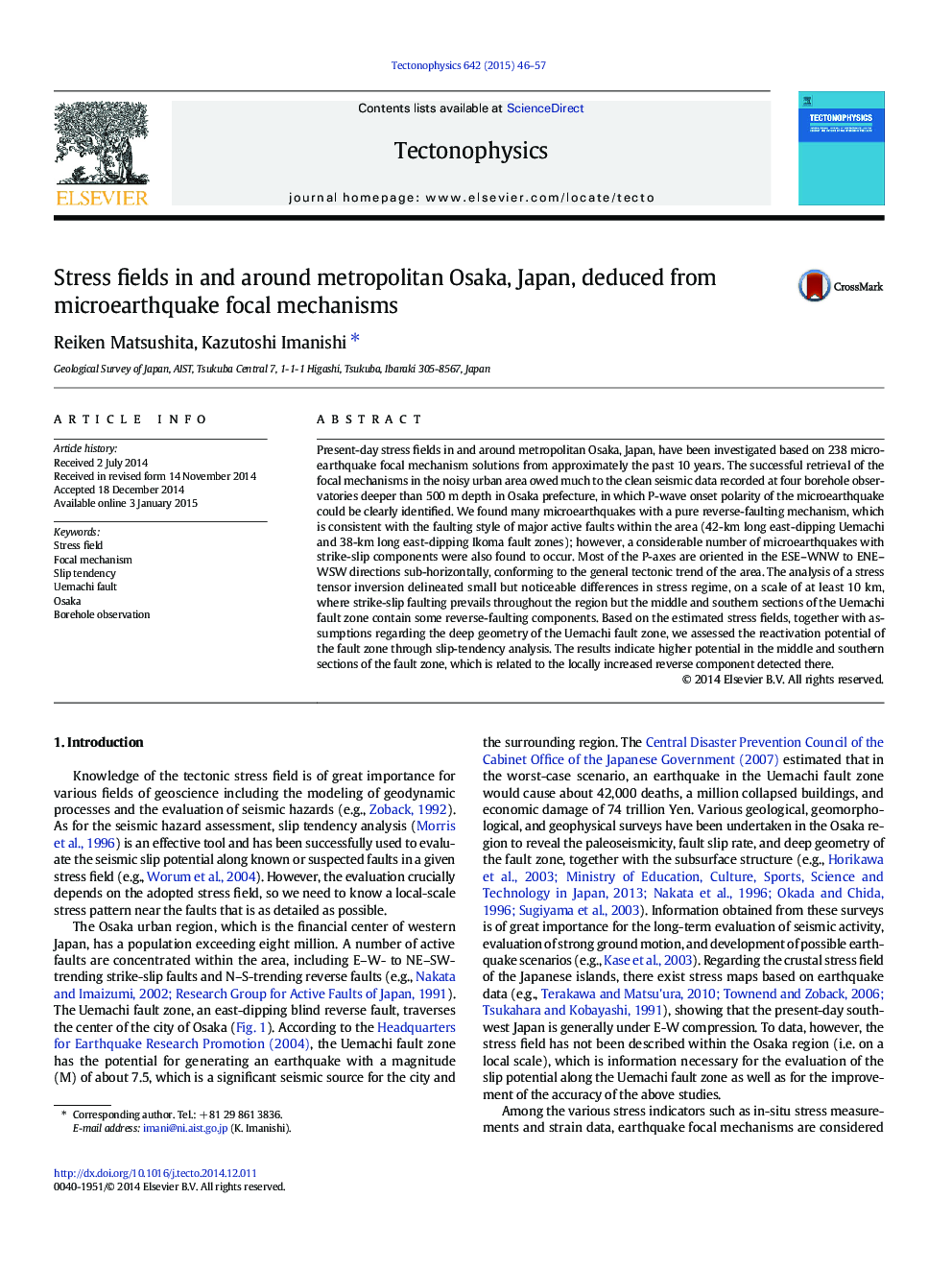| Article ID | Journal | Published Year | Pages | File Type |
|---|---|---|---|---|
| 4691732 | Tectonophysics | 2015 | 12 Pages |
•We report present-day stress fields in and around metropolitan Osaka, Japan.•Borehole data enable us to retrieve numerous focal mechanisms even in urban area.•There are small but noticeable differences in stress regime on a scale of 10 km.•Slip potential of the Uemachi fault is higher in the middle and southern sections.
Present-day stress fields in and around metropolitan Osaka, Japan, have been investigated based on 238 microearthquake focal mechanism solutions from approximately the past 10 years. The successful retrieval of the focal mechanisms in the noisy urban area owed much to the clean seismic data recorded at four borehole observatories deeper than 500 m depth in Osaka prefecture, in which P-wave onset polarity of the microearthquake could be clearly identified. We found many microearthquakes with a pure reverse-faulting mechanism, which is consistent with the faulting style of major active faults within the area (42-km long east-dipping Uemachi and 38-km long east-dipping Ikoma fault zones); however, a considerable number of microearthquakes with strike-slip components were also found to occur. Most of the P-axes are oriented in the ESE–WNW to ENE–WSW directions sub-horizontally, conforming to the general tectonic trend of the area. The analysis of a stress tensor inversion delineated small but noticeable differences in stress regime, on a scale of at least 10 km, where strike-slip faulting prevails throughout the region but the middle and southern sections of the Uemachi fault zone contain some reverse-faulting components. Based on the estimated stress fields, together with assumptions regarding the deep geometry of the Uemachi fault zone, we assessed the reactivation potential of the fault zone through slip-tendency analysis. The results indicate higher potential in the middle and southern sections of the fault zone, which is related to the locally increased reverse component detected there.
